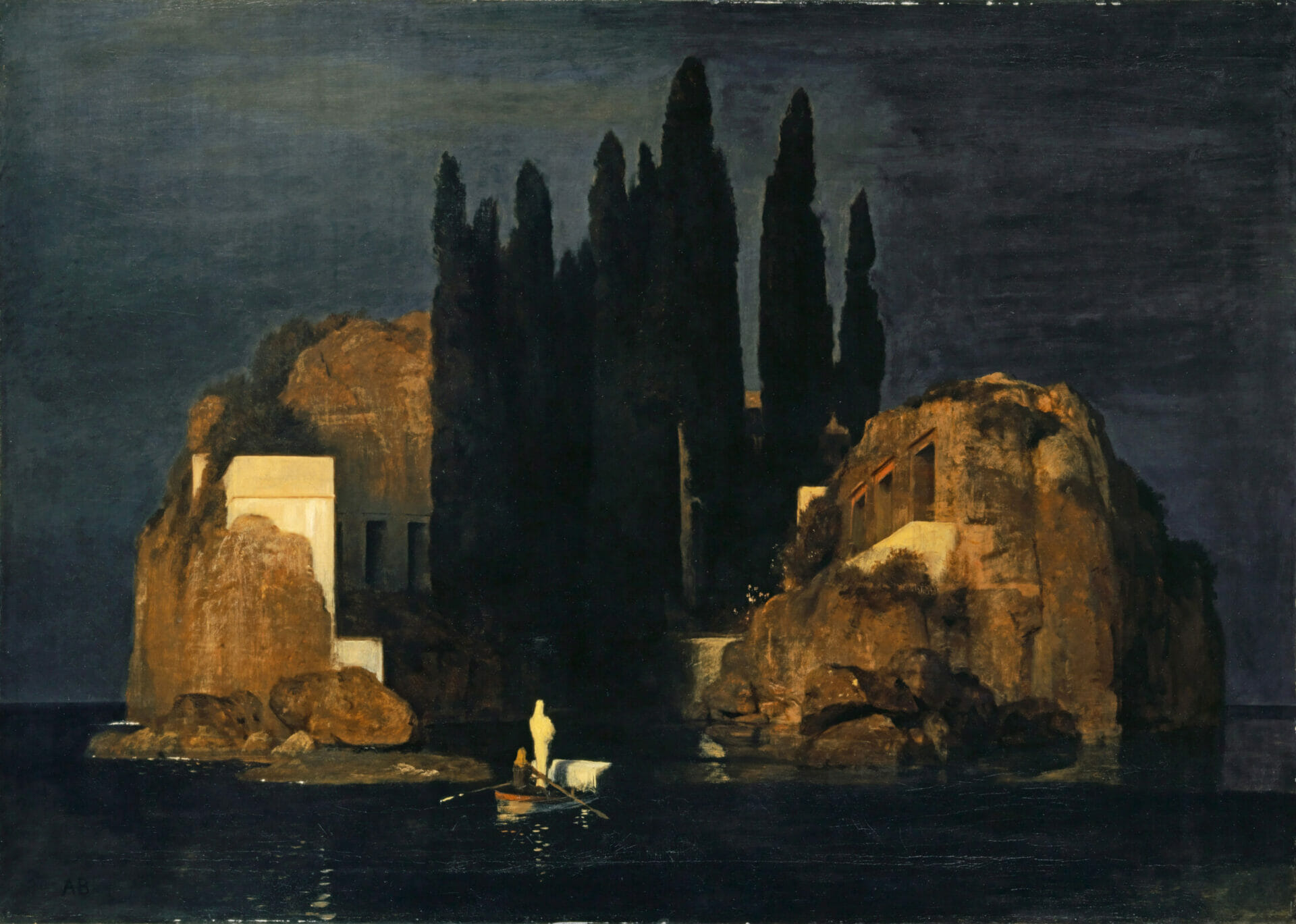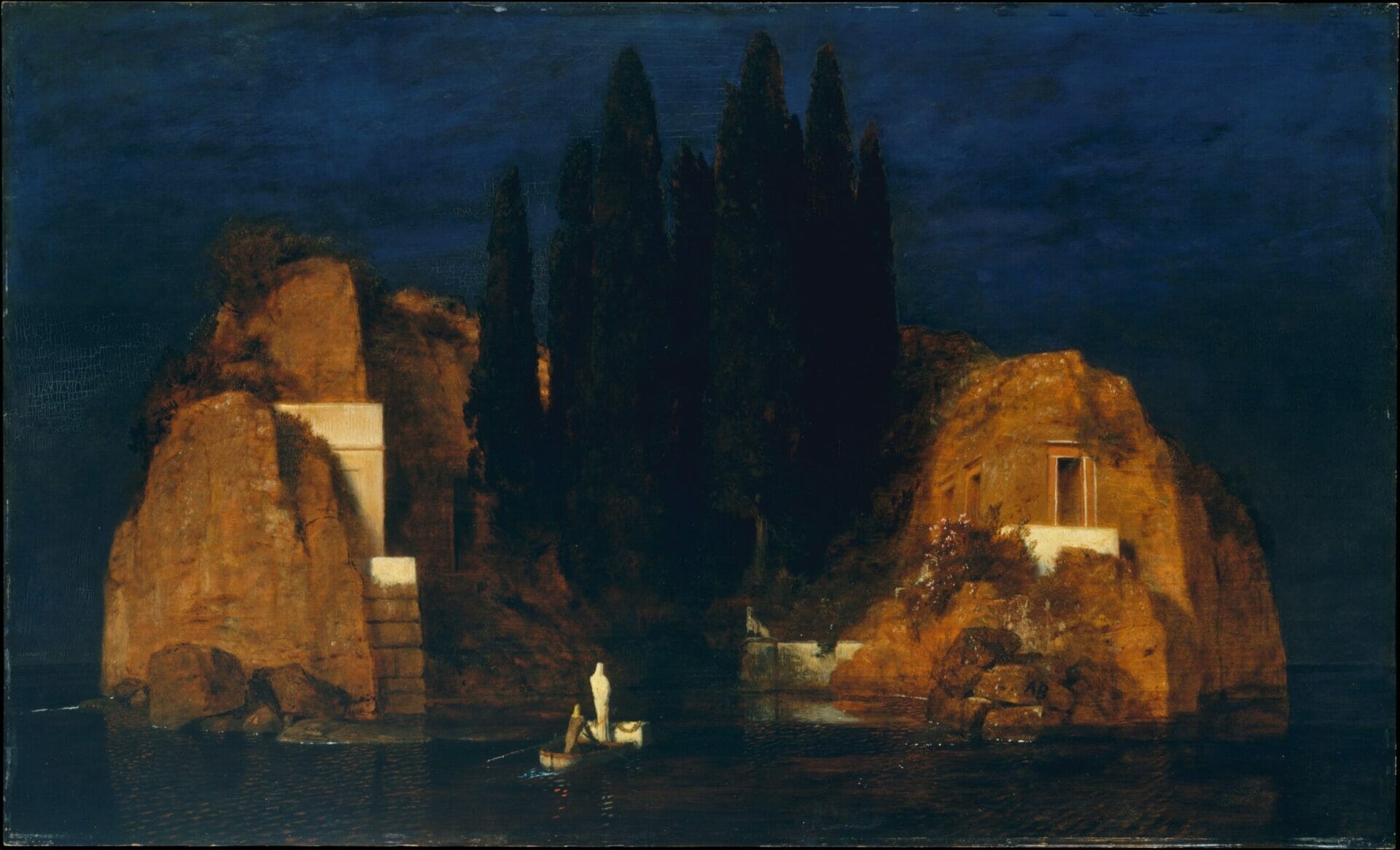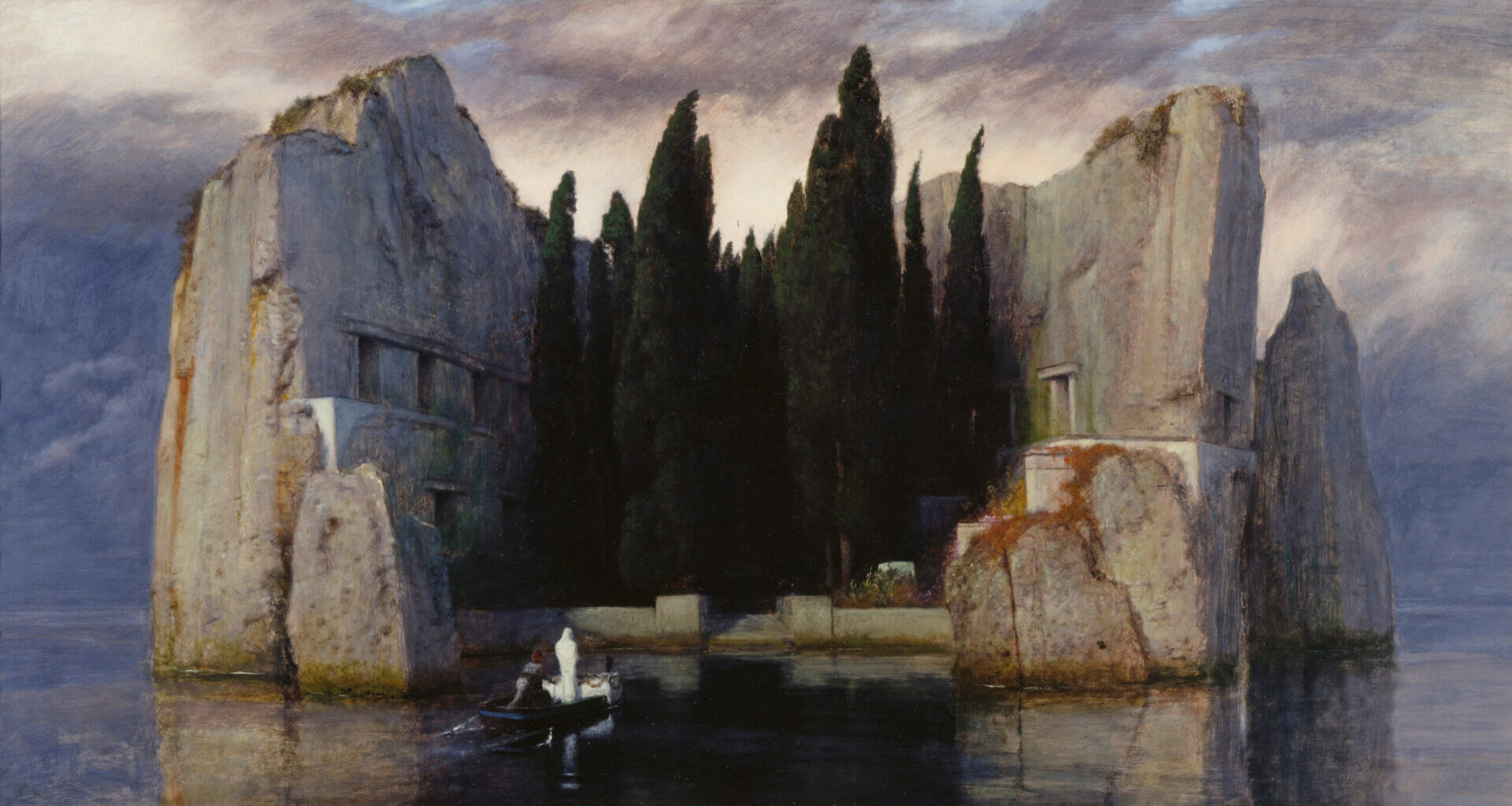
Isle of the Dead | Floating inside the inner world
Artist
Year
Country
Format
Material/Technique
Between 1880 to 1901, the Swiss Symbolist painter Arnold Böcklin created five versions of his most famous work, which is entitled Isle of the Dead. During World War II, Allied bombing partially destroyed the fourth version, which had been acquired by the industrial magnate Baron Heinrich Thyssen. So he painted a fifth. The third one was notoriously acquired by one of Bocklin’s German admirers, Adolf Hitler. So today, there still remain the four versions, which hang in museums in Berlin, Leipzig, Basel, and New York City.
The first three versions of the painting were done in the English Cemetery in Florence, where one of Bocklin’s daughters is buried. By the mid-thirties, the painting had become popular enough that the Russian writer Vladimir Nabokov wrote in his 1936 novel Despair that they could be found in “every Berlin home.”

Böcklin had originally given the title A Quiet Place to the first version of the painting, but this was changed when the art dealer Fritz Gurlitt commissioned the third version, as well as the first, and then gave it the title Die Toteninsel, or Isle of the Dead. All the versions of the work depict the same scene, with a few variations. A small rowing boat is entering what appears to be a water-gate and jetty on an island which is a cemetery, which is identifiable in the picture by the presence of cypress trees. These symbolize death and mourning. On the boat, a figure dressed entirely in white stands, waiting.

Art, symbol, and emotion
Although Bocklin provided little in the way of explanation as to the theme of the picture, suggesting only that it was reminiscent of a dream, the striking allegory and easily comprehensible historical and mythological subject would suggest Death, Life, Purity, the Afterlife, Redemption. The Symbolist Movement liked to concentrate on strongly evocative contexts, and focus on transcendent subjects which had a broad, psychological and symbolic appeal. In this manner, they had much in common with the work on dream interpretation carried out by psychoanalysts and psychologists Sigmund Freud and Carl Jung, active at much the same time as the Symbolists.

Anxieties of the Symbolist Movement
Highlighted by writers such as Guillaume Apollinaire, and Charles Baudelaire, and artists ranging from Gauguin to Klimt and Munch, the late nineteenth-century Symbolist Movement focused on the use of abstract and metaphorical language and images to represent absolute truth. It was in part a reaction to the overly literal interpretations of realism and naturalism. For their part, the figurative arts aspect of the movement tended to turn the visual material towards the restlessness of the soul, relying on dreamlike visions and subterranean and microscopic worlds. Such is, for example, the case with the canvases of Odilon Redon and Gustave Moreau.
Redon pours his visions into a world of chaotic colors, populated by what appear to be infected or giant flowers: in a microcosm that reveals itself to be a macrocosm. Moreau often bends myth and episodes from the Bible to mirror his anxieties. He enriches his scenes with a substratum of meaning, which speaks more to the viewer’s emotions than to his reason.
Elements for a Horror

Böcklin openly stated that the aim of the Isle of the Dead series is not in what it depicts but how it depicts it. It is precisely the composition and construction of the island atmosphere that creates a sense of existential disquiet.
An authentic Horror atmosphere, one could say. The figure in white, standing on the rowing boat entering this little cemetery dock, thus raises many questions about the painting in the mind of the viewer.
The viewer feels lost, lacking a compass with which to fully interpret what they see. And it is at that point that the inner journey begins. Questions prove intriguing to the viewer, who will thus find entirely personal answers to them once they have had time to reflect. This is what happened, for example, in the case of the composer Sergej Rachmaninov. After getting to know Böcklin’s series of paintings through a number of black and white photographic reproductions, he decided to compose a symphonic poem inspired by them. He called the composition Isle of the Dead, and tried to recreate in music precisely that atmosphere of disquiet that he had experienced.
Böcklin’s creative process
At the moment of composition, Böcklin set himself a precise objective that would form both the choice of subject and evocative setting. Everything starts with his intention to make silence fall around him, as soon as he is mentally immersed in his own vision of what the painting should be about. This silence had to be such that, as Bocklin said, a simple knock on the door would make the viewer wince with fear.

Moving on from this point of departure, the painter created the series with a skillful virtuosity of Symbolist taste, revealing himself to be one of the greatest masters in creating both atmosphere and evocative subjects, both to his viewers and to the art cognoscenti of the last hundred years.
Tag
Buy a ☕ for Hypercritic










